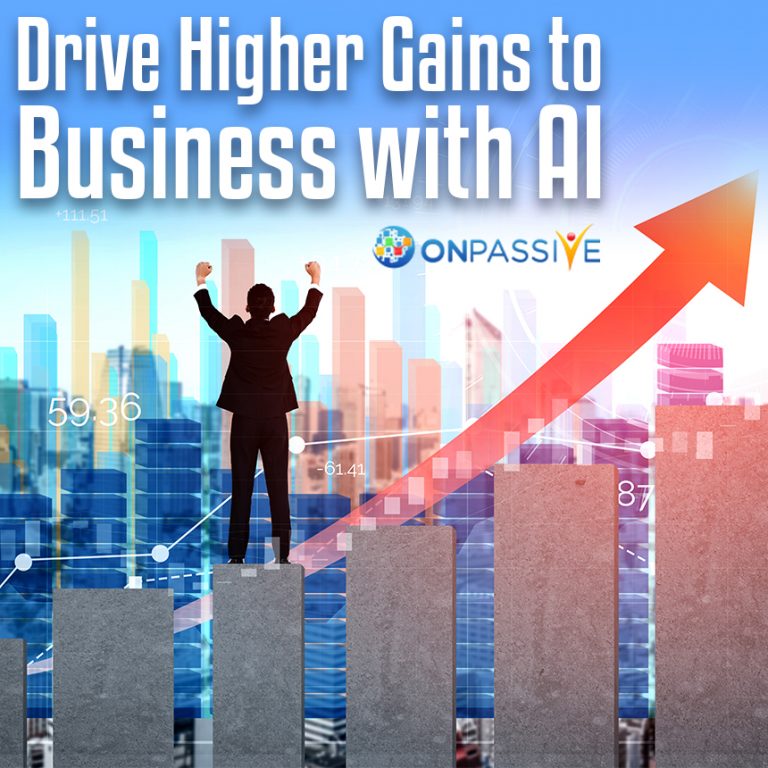
Several businesses have adapted a “data-driven” strategy for operational decision-making. Data can enhance decisions, but it needs the right idea to get the most from it. Multiple people believe that the processor is “human.” The word “data-driven” indicates that data is curated by — and compiled for — people to process.
But to entirely leverage the value contained in data, businesses are required to bring AI-driven insights into their workflows and, often, get humans out of the way. We must emerge from data-driven to AI-driven workflows.
With modern-day operations primarily centered on online platforms, automating big data handling has become more critical than ever. This is where AI performs tasks more efficiently by replicating our capabilities of learning and resolving problems.
As technology progresses at high speed, inspired by the IoT ecosystem, it has paved the path for a synergistic connection between Artificial Intelligence and Big Data.
Artificial Intelligence (AI) is focused on having a transformational influence on business. Information technology is no longer only about codifying business logic and process automation.
Instead, AI-driven insights are the latest currency and the rate with which we can scale that insight, and the information it brings is the foundation for value creation and gain a competitive edge.
As per the study, AI will be one of the top investment priorities for more than almost 30% of CEOs globally by 2020. Multiple businesses are still early in their data science journey and are trying to learn how AI can modify their businesses.
What is Artificial Intelligence?
Artificial Intelligence (AI) makes it feasible for machines to learn from experience, modify to new inputs, and deliver human-like tasks.
AI operates by blending large amounts of data with quick, intelligent algorithms and iterative processing, enabling the software to learn automatically by identifying patterns in the data. Applications of AI in use today involve chatbots, digital assistants, and robots.
AI involves several methods and continuously growing range of technologies, as well as the following significant subfields:
- Natural Language Processing (NLP) is the capability of computers to analyze, understand, and generate human language, including speech.
- Machine Learning (ML) utilizes statistical analysis and neural networks to discover hidden insights in data without explicitly being programmed for where to look for or what to achieve. It automates developing analytical models.
- Deep Learning (DL) is a variation of machine learning – it includes the capability of machines to generate self-learning abilities from vast amounts of data utilizing large neural networks with several layers of processing units. Typical applications involve image and speech recognition.
The power of AI
With the capability of tirelessly and accurately analyzing large volumes of data, AI can help companies achieve a competitive advantage by presenting them insights they would not otherwise have.
With AI-driven insights, companies can move away from a “gut-driven” marketing strategy, where a marketer or product manager depends on their instincts towards a data-driven approach.
The AI can help produce an exact model of your consumer base and discover the most reliable ways to reach them. It can also take it a step further with predictive insights into the expected behavior of the consumers.
One of the most impressive tools available today is predictive audience segmentation driven by AI.
As part of the broader category of predictive analytics, predictive consumer segmentation can help businesses identify a target audience with the highest potential for conversion to a click or sale or install whatever your key performance indicators are.
Developing new methods for analyzing data
Thanks to artificial intelligence, various ways to get AI-driven insights have surfaced into the market. AI has become the next level to query/SQL— techniques employed to analyze data initially.
What earlier used to be a statistical representation has now united with computer science and has become AI and Machine learning.
For example, though employees still play an imperative role in analytics and data management, it is the tools like ML and AI that help businesses analyze data much more quickly and effectively.
Now, which entrepreneur wouldn’t like better efficiency, slighter risks, and lower costs in his/ her business operations?
Several investors and business leaders globally recognize that AI and Machine Learning could help accelerate growth, streamline processes, and inspire innovation. Businesses today have understood this and are swiftly deploying AI-related technologies.
Therefore, it is safe to assume that with AI guidance, Big Data has grown to exponential and epic proportions. Leveraging AI, prescriptive analytics can present company-wide strategic insights encouraging the businesses to progress.
The data
will be data, but the means of receiving insights will improve, just as the
incorporation of AI and big data is starting to unveil its opportunities.


